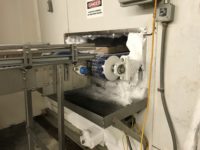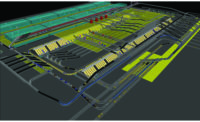Benefits of implementing manufacturing execution systems plant-wide
When the individual components all work together, it can elevate plant operations, efficiency and food safety to the next level.

The traditional manufacturing execution system (MES) has been in use since the 1990s to track plant-floor activities that make up the production process. Whether deployed on-premise, in the cloud or a combination of both, MES functionality can replace much of what used to be handled by operators using paper logs, while dramatically increasing visibility of day-to-day operations.
Here’s how chilled and frozen food processing companies can benefit from implementing MES company-wide.
Parameter management
This first component—parameter management—is about controlling the way the product is made, so it stays within specification. This includes a list of ingredients (the Bill of Materials, or BOM) as well as specific details around each ingredient and each production step.
For example, say you want to produce frozen French fries at multiple plants. Operators will set broad parameters that are important on how to make a French fry, with a lot of those aspects being dictated by the customer. However, at each plant you have unique equipment, and each needs its own customized parameters for each specific fry on that specific line. Yet, the customer still requires an exact duplicate product no matter which plant it came from.
This means that the task of parameter management becomes exponentially more complicated. To make product within specification on one line, you might find that a potato slicer must run at a certain speed due to the way the machine cuts. However, on the line next, there’s a different kind of motor, which needs to be set at a different value to create the same dimension product.
Parameters might also include a work instruction for the operator, such as “this release gate is to be opened whenever buildup occurs,” which may be needed if the task is difficult to automate. Documented and accessible work instructions help lessen the blow of unexpected staff turnover, training rotations or seasonal startups.
Providing a central change control environment for each of these unique parameters (often hundreds per product) helps build consistency day in and day out.
Performance management
The second component—performance management—provides an indication of how production is performing against the schedule with regards to quantity and quality.
This involves determining what you’re supposed to be doing and how fast. By providing the MES system with the necessary production data (automated and manual), it can determine if you are doing as well as you should be. If you aren’t, the system helps identify the problem.
For instance, the nominal standard for your product might be 410 bags of frozen vegetables per minute. If you schedule a 4-hour run, you’d expect to make something like 98,400 units in that time. So, at any time throughout the run, the MES can compare the actual produced quantity with the calculated target quantity and display exactly whether you’re ahead or behind schedule without having to wait until the end.
There is good value in posting dashboards and other public displays to indicate performance compared to plan. Armed with current information, production staff will often come up with minor tweaks and nuances that make a difference. They might also see a need to make changes that they didn’t realize were important, such as coming back to work promptly after a lunch or coffee break.
Over time, as historical data begins to accumulate, it begins to support engineering efforts around continuous improvement, further unlocking greater line efficiencies.
Quality management
Every quality assurance department has a plan. However, ensuring the plan is being followed, including an escalation path when standards are not being met, can be a bigger challenge.
An MES system plays a big role in managing quality. The MES won’t be used to develop the specific quality standards, but rather it is the recording and enforcement tool, so that these standards are carried out on the plant floor.
That might be through the MES system prompting the operator, “now it’s time to take a sample, enter those results and save the results to the database.” It might include some escalation steps, such as “if a sample is out of spec, you’ll need to take another sample in five minutes rather than in half an hour, because if we have another sample above the limit, we may need to stop producing or make a change upstream to make sure we don’t go out of spec.”
And finally, providing a mechanism for management notification like email or text helps ensure that food safety issues are addressed promptly.
Traceability
Another key area in which MES plays a vital role in food processing is around traceability, or genealogy.
Traceability refers to creating an electronic record of everything that went into a finished or intermediate product, including the ingredients and specific lot identifier of each. With this information, you can use the lot code of any finished good to run a report that tells you exactly what material lots are in that unit.
Throughout the process, data is collected via system integration, barcode/RFID readers, vision systems or operator input. At each point, there is an opportunity to not only collect the data, but also control the transfer of materials to prevent incorrect usage.
This critical information can be used later if a supplier ingredient was found to mistakenly contain an undeclared allergen. The MES system can help with tracing that problem to each of the affected batches or lot numbers in case a recall is needed.
Connecting to other systems
The final component of an MES system is to connect what’s happening on the plant floor with other information systems in the company, providing the information needed to do their jobs.
Those systems can be the planning and scheduling system, the financial accounting system, inventory and purchasing and logistics. While these systems may not need to know all the detailed data that the MES system contains, they do need to know the net effects of each operational activity. That can include the effect on inventory, which helps guide the purchasing department, the effect that staffing and scheduling have on production performance and the impact that the volume of goods produced has on logistics planning.
Through reliable presentation of timely, accurate data, the MES becomes a trusted interface between many business systems and the reality of the plant floor.
In summary, an MES system can help with managing parameters, performance, quality and traceability as well as connecting with other systems within the company. When the individual components all work together, it can elevate plant operations, efficiency and food safety to the next level.
Looking for a reprint of this article?
From high-res PDFs to custom plaques, order your copy today!






